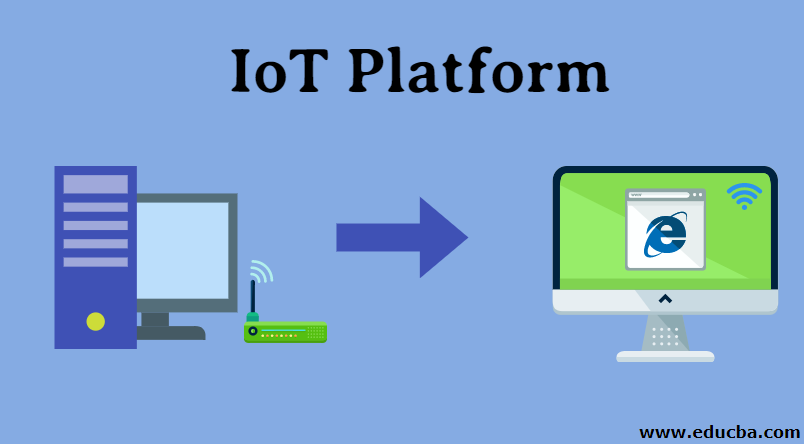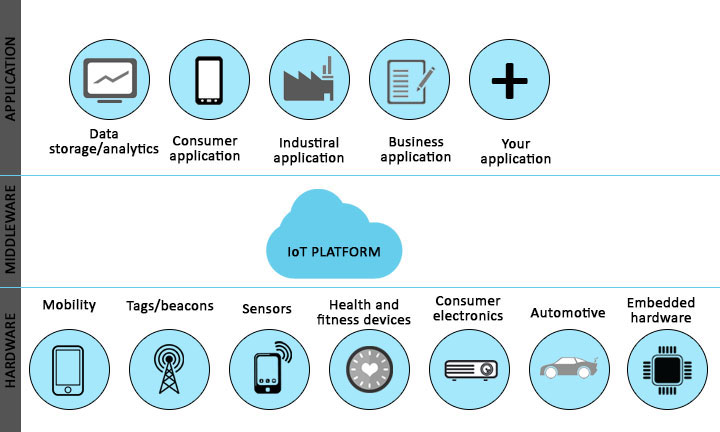
Introduction to IoT Platform
The Internet of Things is a multiple-layer platform that executes direct management, automation, and provisioning of connected devices within the Internet’s circumference. It is operated with the help of the cloud, security, and expert systems connected to hardware devices. It is a ready-made platform for beginners and developers for instant use, which operates at an incredible speed. It is a remote device that allows users to manage the connection between hardware and application devices. It has a good scope for business development with unique features like cloud- and IoT-enabled platforms.
What is an IoT Platform?
IoT platform plays a vital role in smart device vendors and start-ups who can use them to install products with remote control, real-time monitoring, cloud services, and integration using smartphones and other devices. Large-scale application a smart city development and smart energy investors.
Digital twins offer a powerful method to monitor and control assets. Real-world systems and devices provide digital representation by digital twins through enhanced monitoring features and increasing the fast response of input and output events. The digital twin’s future aim is to establish an efficient IoT ecosystem by providing predictive analysis to instant maintenance and usage of analytics.
Intelligent things utilize Artificial Intelligence to retrieve more information from repositories. IoT ties in hand with artificial intelligence for future development. Automatic vehicles and robots at manufacturing units provide maximum output and faster delivery.
The combination of cloud and edge computing enables a cloud-native model that separates and distributes across connected devices in a scalable way. Simultaneously it saves them time and executes a faster operation. It is proved that the Internet of Things has marked a successful growth in DevOps.
Architecture of IoT Platform
The architecture comprises four layers: things, connectivity, core IoT attributes, analytics, and applications. The topmost layer of the IoT stack is used for developing connected devices and smart things. The bottom layer has container management, platform management, and IoT orchestration elements. Messaging to connected devices is facilitated through the communication layer, while the core layer handles configuration management, OTA services, and messaging. The top of the core IoT layer is the analytical rule engine and security systems that detect user IoT solutions’ anomalies. It is flexible but operated only at a high cost.

Some advantages are Scalable, Customizable, and Secure. Advanced IoT platform assures elastic scalability across client requirements. It is too customizable and has speed delivery, API integration, and source code transparency. Usually, the developer requires strong control over the complete infrastructure, so it provides direct access to source code, integration systems, deployment systems, connectivity and security mechanism, etc. It also offers end-to-end flow encryption, including data at rest, device authentication, user ID management, and private cloud infrastructure.
Top Platforms of IoT
The Internet of Things aims to connect with another IoT device to share information using Internet transfer protocols.
Some of the platforms available in the market for building IoT applications are listed below:
1. Microsoft Azure IoT
It is one of Microsoft’s topmost platforms and products, which delivers scalable service, application services, messaging facility, data storage services, and efficient databases. Azure IoT aims to give persistent service through efficient data storage. It helps the company to give an instant and accurate solution with available data in a repository in every unit of an enterprise.
2. Amazon Web Services
It enables users to host and management of services in cyberspace. Some esteemed organizations use AWS to build, host, manage and organize the company’s infrastructure. Here IoT platform offers users many benefits: cloud-based data storage, transfer of applications, and managed storage.
3. Google Cloud Platform
It is a popular IoT platform providing a document-aided, cloud-computing, and elastic database. It is the third-largest IoT platform that powers Machine Intellect, Google Analytics, etc.
4. ThingWorx
It is a widely used platform and was acquired by PTC in 2013. The application developers use this platform for easy and effective execution, analyzing complicated data and content, and offering solutions to rapid data management.
5. Cisco IoT Cloud Connect
It provides services with effective data and voice connectivity, a reliable SIM lifecycle, proficient IP session control, and a customizable billing system.
6. HP’s Universal of Things
It provides accurate solutions to all IT-related issues. It is effectively used for monetization, effective data collection, data analysis, and the correct platform for launching new mobile applications.
7. SAP Cloud Platform
It effectively applies to distantly located devices connected either in a dual manner or directly to cloud services. It is equipment with components to build and manage the IoT application.
8. Oracle Internet of Things
It establishes the connection between a company’s software and its policies. It is a flexible environment for developing and using new applications for commercial purposes.
9. Bosch IoT Suite
It is developed in Germany and stands for its reliable solutions and innovative approach. It is available in an open-source environment.
10. IBM Watson Internet of Things
It offers services like control of remote devices and data transmission without any noises and cloud storage. It offers multiple choices using the IoT platform for Machine Learning and Artificial Intelligence.
Conclusion
The Internet of Things is a cost optimization for many companies in various sectors like transport, agriculture, health, retail, marketing, and industrial by providing real-time support, production, and safety. Smart city development provides smart grid metering and smart aids deployment.
Recommended Articles
This is a guide to the IoT Platform. Here we discuss the introduction, architecture, and top platforms of IoT in detail. You may also have a look at the following articles to learn more –

